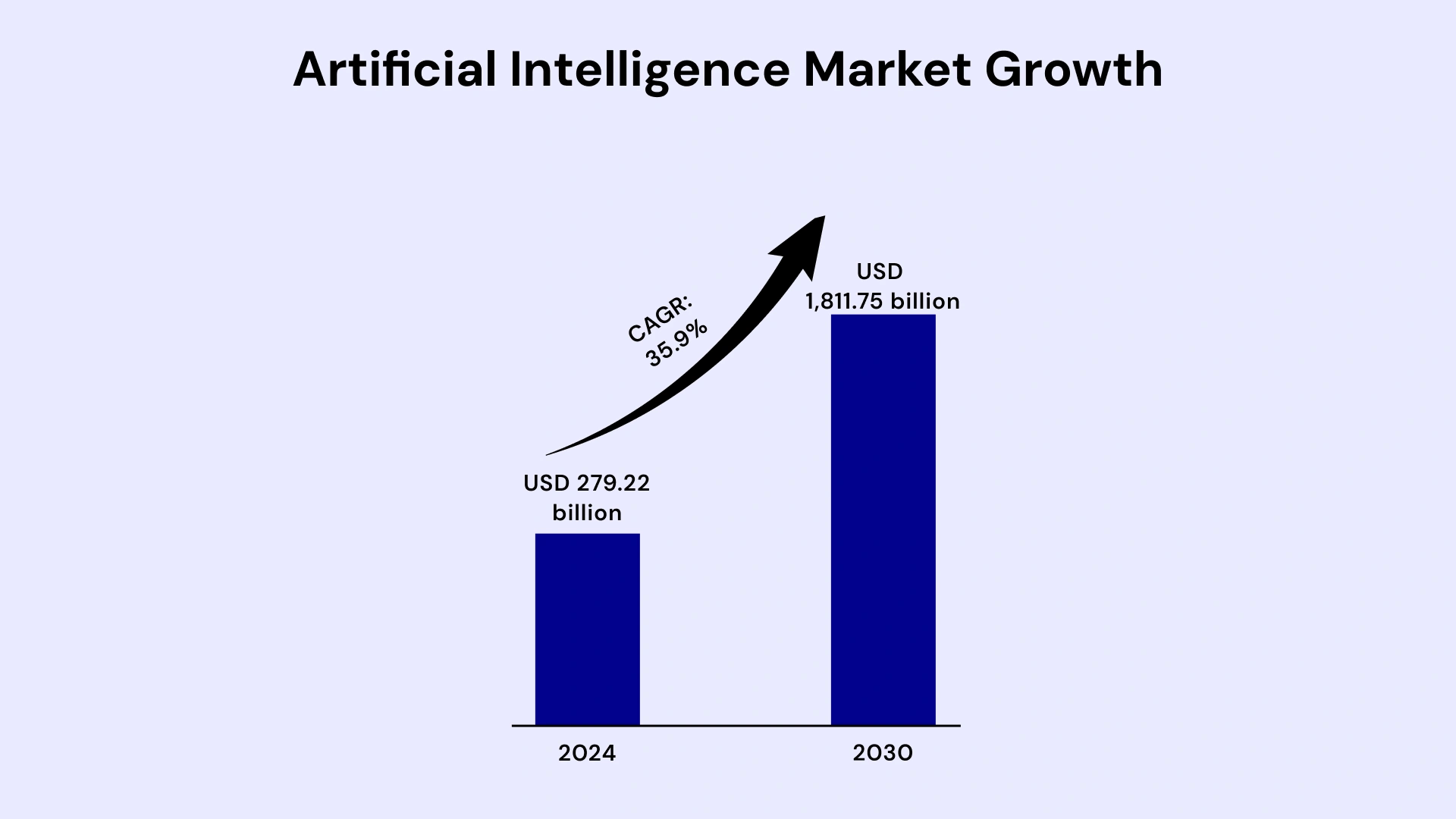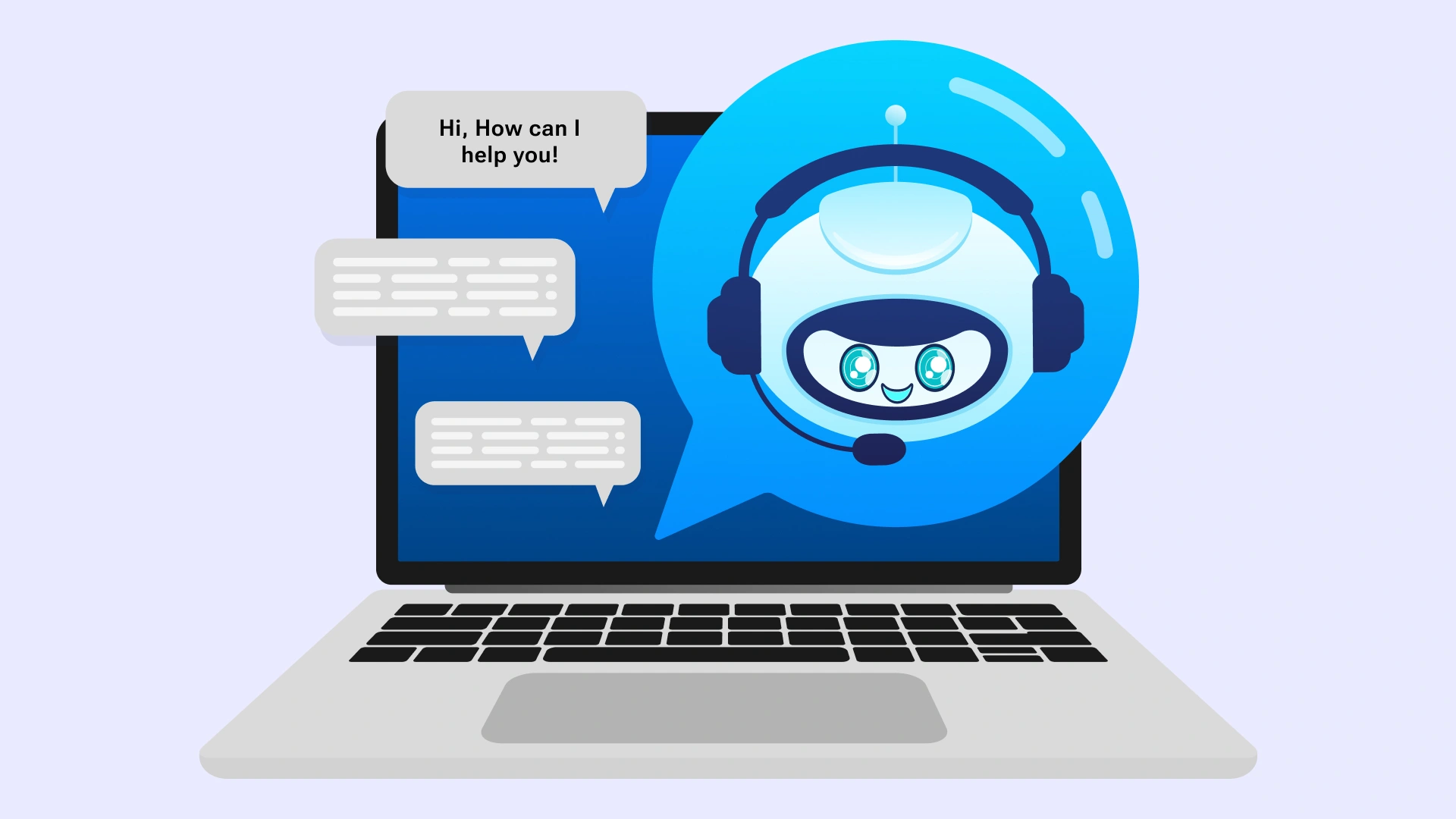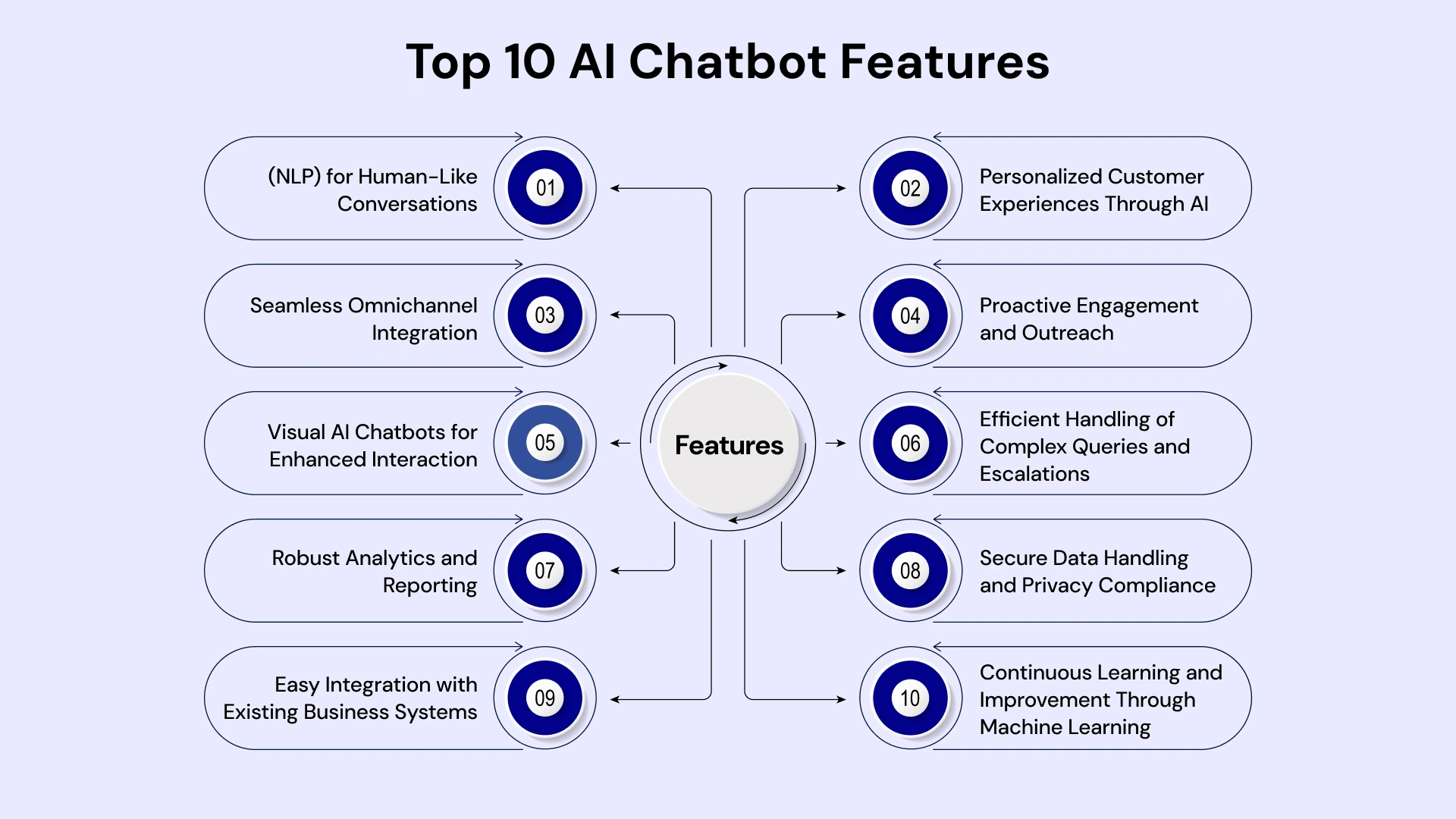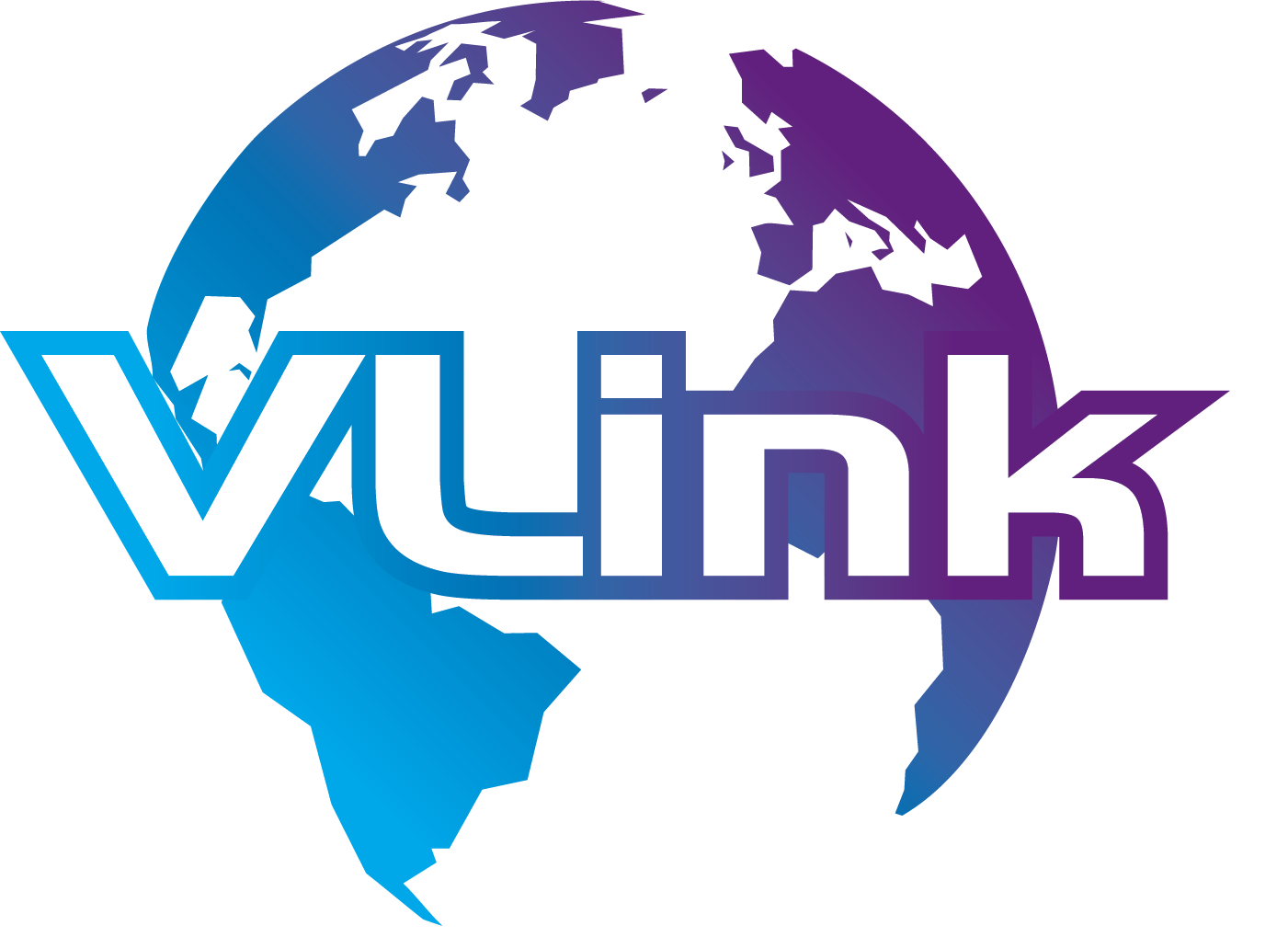
This remarkable expansion underscores the pivotal role that artificial intelligence chatbot technology is poised to play in the future of business. Adopting cutting-edge chatbot features in 2025 will be crucial for the eCommerce and SaaS industries to maintain a competitive edge.
This comprehensive guide delves into the top 10 AI chatbot features your business must prioritize in 2025 to elevate customer engagement, optimize operational efficiency, and fuel substantial growth. Before diving into specific features, it's beneficial to consider the broader landscape of AI chatbot pros and cons.
Let's examine them in detail.
What are AI Chatbots?
In today's hyper-connected world, instant communication is not just a convenience; it's an expectation. This is where AI chatbots step into the spotlight. But what are AI chatbots beyond just automated responses?

They are sophisticated software applications, the digital architects of conversation, powered by the cutting edge of artificial intelligence. Imagine a virtual assistant that can understand your questions, provide insightful answers, and even perform tasks—all through natural language, whether typed or spoken.
At their core, these intelligent systems leverage a powerful combination of technologies. Artificial intelligence chatbot platforms employ Natural Language Processing (NLP) to decipher the intricacies of human language, understanding not just keywords but also intent, sentiment, and context.
Machine Learning (ML) algorithms are the engine that drives their continuous improvement. They allow them to learn from every interaction, refine their responses, and adapt to new patterns in language and user behavior. This constant evolution distinguishes them from their simpler, rule-based predecessors, enabling them to engage in more dynamic and meaningful dialogues.
For businesses, an effective AI chatbot acts as a tireless digital representative, available 24/7 to handle customer inquiries, provide instant support, guide users through processes, and even personalize interactions at scale. The underlying AI chatbot technologies, such as deep learning and neural networks, allow these virtual agents to understand complex requests, access vast amounts of information, and deliver relevant solutions with remarkable speed and efficiency.
From answering frequently asked questions to troubleshooting technical issues and even driving sales through personalized recommendations, a well-designed artificial intelligence chatbot's capabilities transform how businesses interact with customers.
Pros and Cons of AI Chatbots: A Balanced Perspective
Considering the adoption of an artificial intelligence chatbot for your business requires a clear understanding of both its advantages and disadvantages. Here's a pointwise breakdown of the AI chatbot pros and cons:
Pros of AI Chatbots:
- 24/7 Availability: AI-powered bots provide round-the-clock customer support, enhancing user experience and satisfaction.
- Increased Efficiency: They can handle a high volume of inquiries simultaneously, improving response times and reducing workload on human agents.
- Cost Savings: Automating customer interactions can significantly reduce operational costs associated with human staffing.
- Data Collection and Analysis: Artificial intelligence chatbot systems can gather valuable data on customer behavior and preferences, providing insights for business improvement.
- Personalized Interactions: Sophisticated AI support bots can tailor responses and recommendations based on individual user data, enhancing engagement.
- Proactive Engagement: Some chatbots for business solutions can initiate conversations based on user behavior, offering timely assistance.
- Handling Repetitive Tasks: They can automate routine inquiries and tasks, freeing up human agents for more complex issues.
- Improved Lead Generation: By engaging website visitors and answering initial questions, they can qualify leads for sales teams.
- Consistent Brand Messaging: Artificial intelligence chatbot systems ensure consistent and accurate information delivery across all interactions.
- Scalability: They can easily handle fluctuations in customer inquiry volume without requiring additional human resources.
Cons of AI Chatbots:
- Limitations in Handling Complex Issues: Even advanced artificial intelligence chatbot systems may struggle with nuanced, emotionally charged, or particular queries.
- Potential for Impersonal Interactions: Over-reliance on basic chatbot functionality can lead to robotic and frustrating user experiences.
- Initial Investment and Ongoing Costs: Developing, implementing, and maintaining a robust artificial intelligence chatbot can involve significant upfront and recurring expenses.
- Integration Challenges: Seamless integration with existing business systems (AI chatbot Integration) can sometimes be complex and require technical expertise.
- Data Privacy and Security Concerns: Handling sensitive customer information requires robust security measures and adherence to privacy regulations.
- Lack of Empathy and Emotional Intelligence: While improving, AI-powered bots may not always understand and respond appropriately to customer emotions.
- Dependence on Training Data: The quality and comprehensiveness of an artificial intelligence chatbot's training data heavily determine its accuracy and effectiveness.
- Need for Continuous Monitoring and Improvement: Regular review and updates are necessary to ensure the chatbot for business remains effective and accurate.
- Potential for Customer Frustration with Inability to Resolve Issues: If the bot cannot adequately address a user's needs, it can lead to negative experiences.
- Ethical Considerations: Issues related to transparency, algorithm bias, and the impact on human employment need careful consideration.
The Top 10 Chatbot Features Your Business Needs in 2025
Staying competitive in 2025 requires businesses to adopt innovative technologies that enhance customer experience and streamline operations. AI chatbot features are at the forefront of this transformation. Focusing on these key chatbots for business functionalities ensures that your customer service strategy is future-proof and drives tangible results.

1. Natural Language Processing (NLP) for Human-Like Conversations
The foundation of any effective modern AI chatbot features list lies in its Natural Language Processing (NLP) capabilities. This crucial aspect of chatbot functionality enables the artificial intelligence chatbot to go beyond simple keyword matching and truly understand the intricacies of human language.
This includes deciphering user intent, recognizing sentiment, and grasping the context of a conversation. For your chatbot for business in 2025, demanding advanced NLP is non-negotiable. It ensures that interactions feel natural and intuitive, fostering a positive user experience. This fundamental feature of chatbots allows for more nuanced and effective communication.
2. Personalized Customer Experiences Through AI
In today's customer-centric environment, generic interactions simply don't cut it. Leading AI chatbot features leverage the power of data analytics and machine learning to deliver highly personalized experiences. An intelligent AI chatbot for business can analyze individual customer data, including past interactions, purchase history, and preferences, to tailor responses, recommendations, and support.
When you choose chatbot features, prioritize those that enable this level of personalization. AI-powered bots that can understand and cater to individual needs will significantly enhance customer loyalty and drive sales. This is a hallmark of advanced chatbot features in 2025.
3. Seamless Omnichannel Integration
Customers engage with businesses through many channels, from websites and mobile apps to social media platforms and messaging services. A critical AI chatbot feature for 2025 is seamless omnichannel integration. Your artificial intelligence chatbot should be able to operate consistently across all these touchpoints, providing a unified and coherent customer experience.
This means that conversations can seamlessly transition between channels without losing context. When evaluating chatbot features in 2025, ensure they facilitate smooth integration with your existing communication infrastructure. This is a cornerstone of an effective AI-enabled chatbot for customer management.
4. Proactive Engagement and Outreach
Moving beyond reactive customer service, sophisticated AI chatbot features enable proactive engagement. Your chatbot for business can initiate conversations based on user behavior, such as offering assistance during website navigation, providing updates on order statuses, or suggesting relevant products based on browsing history.
These proactive chatbot features in 2025 can significantly improve customer engagement, reduce friction, and drive conversions. Consider how AI-powered bots can anticipate customer needs and offer timely support or information.
5. Visual AI Chatbots for Enhanced Interaction
While text-based chatbots are valuable, the emergence of Visual AI chatbot technology opens up exciting new possibilities for customer interaction. Imagine a chatbot that can understand images uploaded by customers, provide visually relevant product recommendations, or guide users through troubleshooting steps with visual aids.
This can revolutionize product discovery and customer support for industries like eCommerce and Saas. Exploring features of AI chatbots incorporating visual intelligence is a key trend in 2025.
6. Efficient Handling of Complex Queries and Escalations
A basic chatbot functionality might involve answering simple, frequently asked questions. However, the actual value of an advanced artificial intelligence chatbot lies in its ability to understand and address more complex and nuanced inquiries. The system should be designed to parse intricate questions, access relevant information, and provide comprehensive answers.
Crucially, it should also have a seamless escalation mechanism to transfer complex issues to human agents when necessary, ensuring a smooth and efficient resolution process. This hybrid approach leverages the strengths of both AI and human expertise.
7. Robust Analytics and Reporting
Comprehensive analytics and reporting capabilities are essential chatbot features in 2025 to continuously optimize your chatbot's business performance. You need to be able to track key metrics such as conversation volume, resolution rates, and customer satisfaction scores, and identify areas where the chatbot can be improved.
Analyzing this data will provide valuable insights into customer behavior and the effectiveness of your AI-based chatbot features, allowing for data-driven decision-making and continuous refinement.
8. Secure Data Handling and Privacy Compliance
In an era of increasing data privacy concerns, ensuring the security of customer information handled by your artificial intelligence chatbot is paramount. When evaluating features of AI chatbots, prioritize those that adhere to the highest security standards and comply with all relevant data privacy regulations.
Your chatbot for business will likely handle sensitive customer data, making robust security measures and adherence to privacy protocols non-negotiable.
9. Easy Integration with Existing Business Systems
Implementing a new artificial intelligence chatbot solution should not create silos or disrupt existing workflows. Demand AI chatbot Integration capabilities that allow seamless connection with your Customer Relationship Management (CRM) systems,
Enterprise Resource Planning (ERP) software and other critical business applications.
This integration ensures data consistency, streamlines operations, and maximizes the efficiency gains offered by your AI support bot.
10. Continuous Learning and Improvement Through Machine Learning
The field of artificial intelligence chatbot technology is dynamic and constantly evolving. Therefore, selecting chatbot features incorporating machine learning capabilities for continuous learning and improvement is crucial.
Your chatbot for business should be able to learn from every interaction, refine its understanding of language, improve its accuracy in responses, and adapt to changing customer needs over time. Understanding the synergy between chatbots and machine learning is vital for ensuring the long-term effectiveness of your AI-powered customer service strategy.
A strategic approach is essential when choosing chatbot features for your business. Carefully consider your specific business objectives, target audience, and the industry's unique needs. Evaluate the chatbot features and benefits in the context of your particular requirements.
Creating a detailed chatbot features list based on your identified needs will guide your selection process. Exploring the ChatGPT features list can offer insights into general AI capabilities and prioritize AI-based chatbot features specifically designed for business applications and customer interaction.
How Can VLink Leverage Top AI Chatbot Features for Your Business?
At VLink, our AI development services empower your business to leverage the top AI chatbot features of 2025. We tailor artificial intelligence chatbot solutions for eCommerce and SaaS, focusing on seamless integration and enhanced customer experiences. Our expertise includes developing chatbots with advanced NLP for natural conversations, personalized interactions driven by data, and omnichannel presence for consistent engagement across all platforms.
VLink’s dedicated team ensures your chatbot goes beyond basic responses for business. We can implement proactive outreach, even with Visual AI chatbot capabilities for richer interactions. Our solutions handle complex queries efficiently and provide robust analytics to track performance. Security and seamless integration with your existing systems are paramount to our AI chatbot integration services.
Partner with VLink to harness the power of intelligent automation and transform your customer engagement strategy with cutting-edge AI-powered bots.
Conclusion
The landscape of customer interaction is rapidly transforming, and the chatbot features in 2025 offer an unprecedented opportunity for businesses to revolutionize how they connect with their customers. By prioritizing and implementing these top 10 features of AI chatbots, you can ensure that your artificial intelligence chatbot meets the evolving expectations of your customer base and positions your business as a leader in customer experience and operational efficiency.
Embrace the power of intelligent automation with AI-powered bots and unlock new levels of customer engagement and business growth. Contact us today to explore how our comprehensive AI development services can help you strategically implement these cutting-edge AI chatbot features and benefits to transform customer interactions.










 Shivisha Patel
Shivisha Patel
















